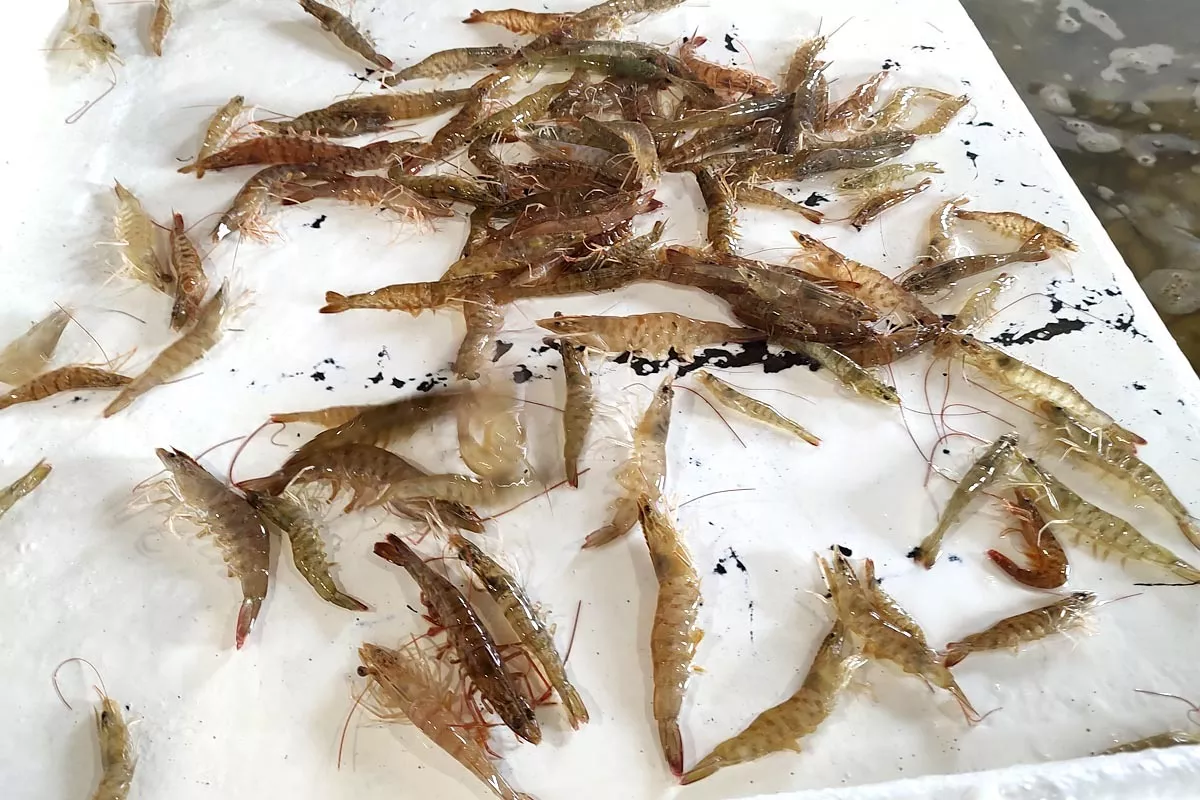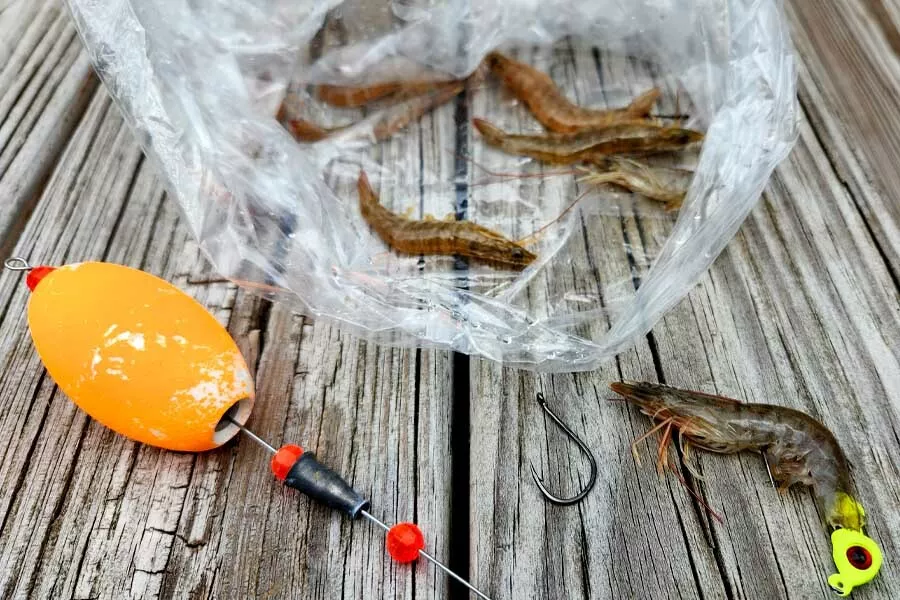Unlock the secrets of effectively hooking live shrimp with three proven methods: horn hook, tail hook, and jighead rigging. This comprehensive guide explores shrimp anatomy, species-specific tactics for redfish and snook, and essential techniques for keeping bait lively longer. Elevate your inshore fishing results with professional insights on jighead selection and environmental adaptations.

Rigging Live Shrimp
How to Hook Live Shrimp
Article Summary
- Master three effective methods for hooking live shrimp: horn hook, tail hook, and jighead
- Gain insights into shrimp anatomy and its influence on rigging techniques
- Explore species-specific rigging strategies for popular inshore fish
- Learn the art of keeping shrimp alive longer for improved fishing results
- Discover tips for selecting optimal jighead colors and fishing techniques
- Understand how seasonal and environmental factors affect shrimp rigging choices
Mastering the art of fishing with live shrimp is a game-changer for inshore anglers. Whether you're targeting redfish, seatrout, snook, mangrove snapper, sheepshead, or hogfish, the right techniques can significantly elevate your angling success. Florida inshore fishing expert Captain William Toney shared his knowledge and expertise of fishing with shrimp for multiple gamefish. This comprehensive guide and the companion video How to Hook Live Shrimp we made with William delve into the key aspects of effectively hooking live shrimp, offering invaluable insights for both novice and experienced fishermen alike.

Understanding Shrimp Anatomy
Knowing where the brain is located is critical. It's the key to keeping your bait alive and lively, If you pierce the brain with you hook, it's lights out for the shrimp.
Seth Horne, In The Spread founder- Hook placement to maximize bait longevity
- Rigging techniques that mimic natural shrimp movement
- Casting dynamics for improved accuracy and distance
- Presentation styles that take advantage of the shrimp's natural behavior
By taking the time to study and appreciate the intricacies of shrimp anatomy, anglers can significantly improve their live bait fishing techniques. This knowledge serves as the cornerstone for the various rigging methods we'll explore next, each designed to capitalize on the shrimp's natural characteristics for maximum fishing success.
Three Essential Rigging Methods for Live Shrimp
The Horn Hook Method
The horn hook technique involves inserting a J-hook under the shrimp's horn, between the eyes and the brain. This method is particularly effective for several reasons:
- Keeps the shrimp alive longer
- Provides a more realistic action in the water
- Ideal for targeting discerning fish that prefer natural bait movement
To execute this technique:
- Carefully identify the space between the shrimp's eyes and brain
- Gently insert the J-hook under the horn
- Ensure the hook doesn't penetrate the brain
Tail Hooking with a J-Hook
Tail hooking is Captain Toney's preferred method, especially when casting distance is a priority. The benefits of this technique include:
- Improved casting distance due to the weight-forward configuration
- Enhanced natural movement, mimicking a shrimp's kicking action
- Versatility in various bottom conditions, particularly in eel grass and sandy areas
To tail hook a shrimp:
- Hold the shrimp gently but firmly
- Thread the J-hook into the tail, being careful not to damage the meat
- Ensure the hook is securely in place for casting
Jighead Rigging
Rigging shrimp with jigheads is a versatile and deadly technique, especially for bottom-dwelling fish and crustacean eaters. This method offers several advantages:
- Excellent for fishing in swift water
- Allows for precise bottom presentations
- Versatile for various species and fishing conditions
Captain Toney's jighead rigging process:
- Select an appropriate jighead size and color
- Insert the jighead through the shrimp's head, avoiding the brain
- Thread the shrimp onto the hook, ensuring it's secure

The color of your jighead can make a significant difference, especially when targeting redfish and mangrove snapper.
Captain William ToneySpecies Specific Strategies
Different fish species may respond better to certain rigging techniques. Captain Toney shares his expertise on targeting specific inshore species:
- Snook and Redfish: Jighead-rigged shrimp can be highly productive. Experiment with different retrieval speeds and bottom bouncing techniques.
- Mangrove Snapper: Use lighter jigheads and focus on precise presentations around structure.
- Sheepshead and Hogfish: Employ a slow, deliberate presentation with jighead-rigged shrimp near rocky bottoms and structures. Vert slowly bounce the shrimp on the bottom creating poofs of sand.
- Seatrout: Try using a jighead-rigged shrimp under a cork during standing tides or when covering long stretches of shoreline.
Environmental Considerations
Captain Toney emphasizes the importance of adapting your rigging techniques to the environment and conditions:
- Bottom Type: Use tail-hooked J-hook rigs in grassy or sandy areas to avoid snags. Opt for jigheads in rocky or structured bottoms.
- Water Depth: Adjust the weight of your jighead based on the depth you're fishing and current strength.
- Tidal Movement: During strong tides, heavier jigheads may be necessary to maintain bottom contact.
- Seasonal Changes: Be prepared to modify your rigging techniques as fish behavior changes throughout the year.
Keeping Shrimp Alive
Maximizing the lifespan of your live shrimp is crucial for successful fishing. Captain Toney offers these tips:
- Use an aerated livewell or bait bucket to keep shrimp oxygenated
- Avoid overcrowding shrimp in the bait container
- Regularly change the water to maintain optimal conditions
- Keep the bait container out of direct sunlight to prevent overheating
- Put your bag of shrimp in a bait bucket in the cooler. Just keeping them cool helps them live longer.
Smarter Fishing Leads to More Catching
By mastering these techniques and understanding the nuances of fishing with live shrimp, anglers can significantly improve their success rates on the water. Remember, practice and patience are key to becoming proficient in these methods.
Sarah Mendez Especialista de Pesca, In The Spread









